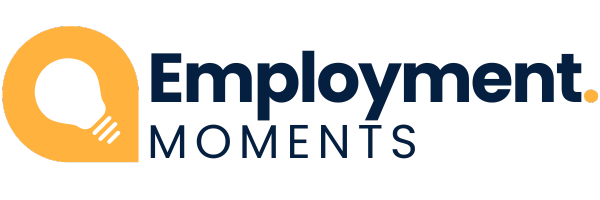In today’s fast-paced world, finding a balance between work and life is key. Many people struggle to relax due to work stress. This shows why we need good ways to manage stress and balance our lives.
Knowing how to balance work and life is important for our mental health. It also helps us be more productive in both our personal and work lives.
Understanding the Importance of Work-Life Balance
It’s key to balance work and personal life for good mental health and happiness. People who find a good balance often feel less anxious and depressed. Work stress can ruin personal time, hurting relationships and well-being.
The Impact on Mental Health
Too much work stress can cause burnout and anxiety. Studies link long work hours to less happiness. Finding ways to relax, like exercise and mindfulness, helps a lot.
Boosting Productivity through Balance
Work-life balance is linked to being more productive. Taking breaks helps you focus and be creative. Companies that support balance see better work and happier employees.
Practical Strategies for Achieving Work-Life Balance
Finding work-life balance takes effort and smart strategies. It’s key to set clear boundaries between work and personal time. This helps keep your mind healthy and boosts productivity. Good time management and task prioritization help you stay focused on what’s important.
Here are some practical tips to help you find harmony in your daily life.
Setting Clear Boundaries
It’s vital to set clear boundaries between work and personal life. Tell your colleagues and bosses when you’re available for work and when you’re not. This helps reduce stress and shows respect for your time.
Effective Time Management Techniques
Good time management boosts your work efficiency. Try the Pomodoro Technique for focused work in short intervals with breaks. The Eisenhower Matrix helps you sort tasks by urgency and importance, so you can focus on what’s most important.
Prioritizing Tasks for Better Efficiency
Knowing the difference between urgent and important tasks is key. Prioritize tasks that give you the best results and delegate or delay less important ones. This way, you work more efficiently and have time for personal activities.
| Technique | Description | Benefits |
|---|---|---|
| Pomodoro Technique | Work in intervals of 25 minutes followed by a 5-minute break. | Improves focus, reduces fatigue. |
| Eisenhower Matrix | Classifies tasks into four quadrants based on urgency and importance. | Enhances task prioritization, minimizes overwhelm. |
| Setting Boundaries | Communicate work and personal availability. | Reduces stress, fosters mutual respect. |
Work-Life Balance: Finding Your Personal Harmony
Understanding your personal values and priorities is key to achieving work-life harmony. When your daily life matches what you value, you feel fulfilled. But, if it doesn’t, you might feel stressed and unhappy. To live a balanced life, it’s important to know what you value most and focus on those things.
Identifying Personal Values and Priorities
Personal values shape what matters most in life. Thinking about these values helps you figure out what’s important to you. This could be family, your job, health, or hobbies. Knowing these helps you plan your time better and make choices that make you happy.
Creating a Customized Daily Routine
After figuring out your values and priorities, you can make a daily plan that fits. Your routine should include time for work, rest, family, and taking care of yourself. Being flexible is important because life changes. Adding buffer times in your schedule helps you adjust to unexpected things and keeps your life balanced.
| Activity | Time Allocation | Impact on Fulfillment |
|---|---|---|
| Work | 8 hours | Career growth and financial stability |
| Family Time | 3 hours | Strengthens relationships and support |
| Self-Care | 1 hour | Enhances mental and physical well-being |
| Leisure Activities | 2 hours | Improves life satisfaction and relaxation |
Creating a daily routine based on your values helps you find balance and fulfillment. It’s about balancing your duties with what truly matters. Regularly checking and adjusting this balance helps you grow personally and professionally.
Utilizing Technology to Enhance Balance
Technology offers many ways to keep a healthy balance between work and life. The right tools can make managing tasks easier and help schedule downtime well. Using productivity apps and calendar tools helps users make the most of their time and focus on their well-being.
Productivity Apps for Task Management
There are many productivity apps to help manage tasks better and work more effectively. Apps like Trello, Todoist, and Asana help organize tasks easily. They let users set priorities, track their progress, and work together with others.
By using these apps daily, people can work more efficiently without losing personal time.
Leveraging Calendar Tools to Schedule Downtime
Calendar tools, such as Google Calendar, are great for planning downtime. They help keep technology use balanced and prevent burnout. By setting reminders for personal time, people can plan downtime alongside work, improving their well-being.
Using calendar tools wisely lets individuals prioritize health and leisure as much as work tasks.
Building a Supportive Environment for Work-Life Balance
Creating a supportive environment is key for achieving work-life balance. A positive workplace culture is crucial. It helps employees manage their work and personal lives better.
Employers should focus on policies that value personal time. This lets staff recharge and stay well. Flexible work options and open communication help build trust and teamwork.
Strong family support is also essential. Families can help people take breaks from work. They encourage hobbies, relaxation, and spending quality time together.
Community involvement adds to the support. Joining local groups or activities gives people a network that values leisure and personal growth. When workplaces, families, and communities support balance, people can thrive in both their careers and personal lives.


